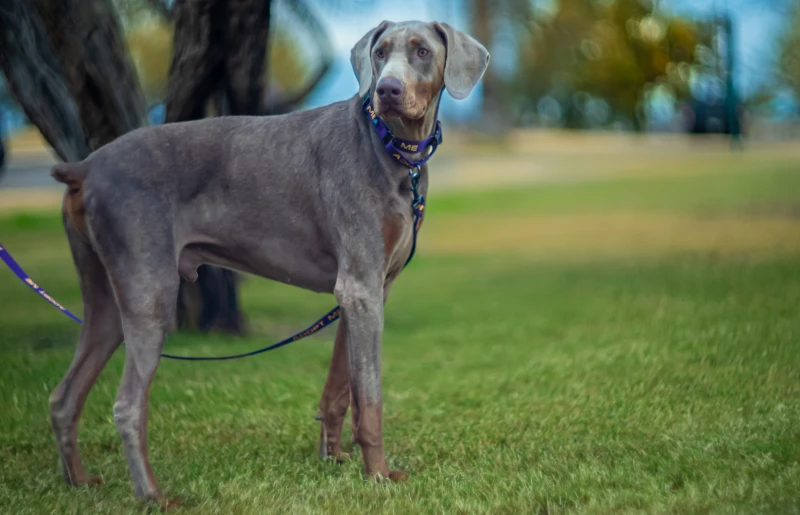What Were Schnauzers Bred For? Breed History Explained

Updated on

The Schnauzer is a high-spirited, playful, and intelligent dog that was bred to be a ratter and watchdog. If you’re familiar with the Schnauzer breed, you may know that there are three types of Schnauzers, which include the miniature, standard, and giant varieties, with the Standard Schnauzer being the original breed.
One thing you may not know about this breed is that the name Schnauzer means “whiskered snout” in German because of its distinctive bearded snout.
Now that we have the basics behind us, we’ll take a closer look at the Schnauzer breed to give you a better understanding of this dog’s history over time.
The Early Days
While there is no precise written history of this breed, many believe that the Schnauzer came about by crossing the black German Poodle with the gray Wolfspitz that had Wire-Haired German Pinscher genes. The resulting medium-sized dog with the bearded muzzle looked very much like today’s Standard Schnauzer and was established as a working dog.
As the Schnauzer became increasingly popular into the 17th century, the breed was featured in statues, paintings, and tapestries created by famous artists, such as Albrecht Durer and the Dutch painter Rembrandt.
Breed Emergence in America
During the 19th century, dog breeders in Germany crossed the Schnauzer with other breeds to create both the Miniature Schnauzer and Giant Schnauzer. While Schnauzers may have been imported into the United States earlier, it’s thought that this breed made its American debut around 1900.
As European immigrants landed in America, they brought along Schnauzers they kept as pets. At the same time, traders and world travelers returning home to America brought some of these versatile and loyal dogs with them to help establish the breed in the US.
The Schnauzer Club of America was established in 1925. A few years later, in 1933, the club was split to form the Standard Schnauzer Club of America (SSCA) and the American Miniature Schnauzer Club. Among other things, the SSCA was established to define the American standard of the breed and to promote the Schnauzer as a show, performance, and family dog.

The Modern Standard Schnauzer
The Standard Schnauzer we’re most familiar with today is a medium-sized working breed. This dog has a robust, athletic build and a wiry coat that’s either black or salt-and-pepper colored. This dog is intelligent, devoted, good-natured, lively, and highly trainable.
Schnauzers have always been classified as working dogs because of their long history as good ratters and guard dogs. It’s believed that the majority of dogs used to guard farmers’ carts brought to market before the first world war were Standard Schnauzers.
Modern Standard Schnauzers make great pets for active families who want a dog to join them in all their activities. Rather than being a one-person dog, Standard Schnauzers are devoted to everyone in their family. Plus, they’re great with kids because of their playfulness and high tolerance. Unfortunately, they can be stubborn and strong-willed, so it’s essential to start training them early while they’re still puppies.

The Modern Miniature Schnauzer
As opposed to the Standard Schnauzer, which stands about 19 inches high and weighs around 40 pounds, the modern Miniature Schnauzer stands just 14 inches tall and weighs around 14 pounds. This little dog is spunky, alert, and can be feisty when confronted by dogs it doesn’t know.
This is a playful dog breed that makes a great family pet. If you have children and are thinking of getting a Miniature Schnauzer, be sure to teach your kids to be respectful and kind to pets. Thankfully, this little dog is a quick learner that is very devoted to whoever decides to adopt it.
The Miniature Schnauzer has its roots in Germany in the late 19th century. It’s a descendant of the Affenpinscher and the Standard Schnauzer. While they were originally used for hunting rats, their main mission today is to bring joy to whoever is lucky enough to live with these happy little dogs.

The Modern Giant Schnauzer
The Giant Schnauzer is a big dog that stands 26 inches high and weighs around 80 pounds. As the largest of the German Schnauzers, the Giant Schnauzer is a descendant of the Great Dane and Bouvier des Flandres breeds.
During the two world wars, this dog was used as a guard, trench, and messenger dog. They were also used by Germans to protect property.
The modern-day Giant Schnauzer is a powerful dog that is composed, friendly, and easily trained. They need lots of daily exercise and love joining their families on daily outings. If you’re looking for a large dog that loves playing and is good with kids, the Giant Schnauzer may be a good fit for you.

Conclusion
The Schnauzer’s breed history can be traced back to Germany between the 14th and 16th centuries. This versatile, wire-haired breed performed many duties for Germans, including protecting their owners as they came and went with their goods, guarding livestock, and hunting vermin.
Whether you have a Miniature, Standard, or Giant Schnauzer, you’ll undoubtedly have a companion for life since nearly all Schnauzers are loyal and committed to the people they live with. These dogs are particularly good with children, and they make awesome watchdogs that are always ready to alert their families of intruders.
Featured Image Credit: everydoghasastory, Shutterstock














